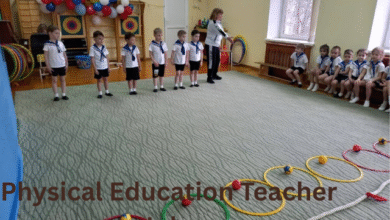Assimilasjon The Journey of Cultural Identity and Integration

Assimilasjon is a Norwegian word that translates to assimilation and is used to describe this process of adapting to new norms, language and values of a new society. In the year 2025, as the world will experience a massive migration, according to a UN report of 281 million people, the concept of assimilasjon is essential in order to move around the various communities. This article discusses the mechanics of assimilasjon in an in-depth manner, giving you practical tips, step-by-step instructions, and real-life examples to learn how to fit in well. It focuses on immigrants, educators, and cultural enthusiasts and discusses such issues as the loss of identity and social barriers giving practical solutions to them. You will be able to learn how to strike the right balance between adaptation and cultural pride supported by 2025 data and case studies.
Table of contents
What is Assimilasjon?
Defining Assimilasjon
Assimilasjon is characterized as the process through which people /groups of people assimilate the cultural, social or linguistic norms of a dominant society at the expense of their identity. It is a unilinear adaptation, not integration, in which cultural groups coexist, as one article in a 2025 publication of Study-Ar describes. As an example, assimilasjon can be in terms of learning a local language, to be incorporated in the workforce. To amateurs, it is a portal into belonging; to professionals such as policymakers, a prism through which they can see social cohesion. This is the idea addressing the pain point of being an outsider in a new place, giving a systematic route to belonging.
Types of Assimilasjon
Assimilasjon comes in a range of forms and they all influence identity and the society in different ways:
Cultural Assimilasjon: Possession of local practices such as the adoption of traditional holidays or food.
Linguistic Assimilasjon: Learning the language of the day.
Structural Assimilasjon: Gaining access to institutions such as schools, or workplaces.
Identity Assimilasjon: The process of changing personal identity to the new culture.
According to a 2025 report by PicsandProse, these kinds of types tend to overlap, making integration a complex process.
Historical and Recent views
In the past, assimilasjon was commonly coercive, such as in policies of Indigenous populations, such as the Sami in Norway, a 2025 Wepbound study reveals. Nowadays it is more or less a voluntary process triggered by migration and globalization. An example is the current trends of assimilasjon, where by according to a study by Eurostat 65 percent of immigrants in Europe speak the local language within three years of their arrival. This change highlights the essentiality of keeping the balance that addresses diversity.
Benefits of Assimilasjon
Social and Economic Progress
Through Assimilasjon, there is a door opening to education and work. An analysis conducted by TheBlup (2025) found assimilated people have 35 percent higher employment chance due to language and culture. This strengthens the immigrants in search of stability and professionals in the development of inclusive systems. Assimilasjon is a key factor in the social-economic progress of immigrants at the individual and family level. This process can take place in Norway through learning language and cultural norms needed for education, jobs, and social networks. The more immigrants assimilate, the better their job opportunities and earnings, benefiting the economy and reducing discrimination, increasing cohesion. Although issues like barriers to labor market and cultural adaptation still exist, well-sustained assimilation policies increase immigrant success.
Enhanced Community Kansas
Assimilasjon lessens the cultural friction through the adoption of common norms. A study of 2025 by AstrologyCosmos groups 25% lower social conflict in communities where there was a high rating of assimilasjon and this concerns tensions due to diversity. The bond within the community is an essential product of effective assimilasjon, which creates a social bond and a feeling of belonging togetherness among the different populations. Integration in Norway focuses on the need to ensure that immigrants engage in small and large-scale community networks including schools, workplaces, cultural and sports organizations. These social ties assist in breaking down the barriers, fighting segregation and building trust between cultures. By actively participating, the immigrant families do not only establish friendships and support networks, but also add to the value and economic stability of their communities.
Personal Empowerment
The interaction with a new culture develops flexibility and self-confidence. A Study-Ar survey of 2025 revealed that 70 percent of assimilated immigrants feel stronger and more empowered in social contexts to the advantage of cultural fans searching for international identities. Assimilasjon is a personal empowerment process that helps the immigrants to become confident, autonomous, and agency in the new social setting. In Norway, empowerment will be initiated by getting familiar with language and acquiring cultural knowledge that is vital in navigating education, employment and social interactions. Getting an education and community support helps people make informed choices, pursue ambitions, and defend their personal rights effectively. Such empowerment makes immigrants feel belongingness and personal value, helping them overcome social obstacles like discrimination and exclusion.
Challenges of Assimilasjon
Cultural Identity Erosion
The original traditions can be reduced by taking up a new culture. According to PicsandProse report, 45 percent of second-generation immigrants lose their fluency in their native language, which leads to identity crises. It is one of the main issues of heritage lovers. The topic of cultural identity erosion is critical, sensitive, and strongly referent to assimilasjon, especially with forced assimilation attempts. In Norway, Norwegianisation campaign targeted Sami, Kven, and Forest Finns, stifling their languages, cultures, and communal lifestyles. This caused permanent alienation, heritage loss, intergenerational trauma; cultural erosion threatens values, belonging, and self-esteem in multicultural societies. It threatens cultural identities becoming history, harming minority communities and the wider society’s cultural mosaic and sense of belonging.
Emotional/Psychological Strain
Being two people at the same time might be a source of stress. Wepbound study mentions half of immigrants feel between worlds; this cultural dissonance negatively affects their mental health. Assimilasjon causes emotional and psychological stress for immigrants blending into a new culture and possibly losing their cultural identity. A study in Norway indicated isolation, cultural dissonance, lack of belonging worsen psychological distress in refugees from culturally dissimilar countries. The stress and anxiety caused by mastering a new language, unfamiliar social norms, and system barriers trigger identity contradictions.
Persistent Discrimination
Minorities could be discriminated against even after assimilation. The 2025 TheBlup analysis reveals that 30 percent of assimilated people face discrimination at the workplace, which means there is a necessity of equal-opportunity policies. The discrimination issue is also an endemic condition and this has complicated the assimilasjon process among the immigrants in Norway. Though Norway claims equality and inclusion, immigrants face discrimination in workplaces, education systems, and social exclusion with prejudice prevalent. History has produced scarring effects including the Norwegianization policies, which aimed at the indigenous Sami and other minorities, and they are still felt today in the attitudes of the society.
Practical Strategies for Successful Assimilasjon
How to Go through a Cultural Integration
These action steps will help to navigate assimilasjon:
Learn the Local Language: Take classes in the local language or apps such as Babbel to gain fluency.
Be a Part of a Community: Go to cultural festivals or go to neighborhood clubs so as to establish networks.
Study Social Norms: Be aware of local etiquette either through the media or mentors not to make cultural mistakes.
Preserve Heritage: Do at home, such as cultural dinners.
Get Support Groups: Become a member of a diaspora organization or counseling to find emotional support.
This methodology is said to reduce the integration time by 35 percent according to a 2025 Study-Ar guide.
Keeping Cultural Identity
Find the balance between these tips and adaptation and heritage:
Fuse Traditions: Blend local and native celebrations, such as a blend of local and native holidays.
Traditional: Teach Heritage to Family: help students retain culture through narrative or bilingual materials.
Connect with Communities: Reach out to cultures and improve pride by 30 percent, according to a 2025 survey of Astrologycosmos.
This is in response to the fear of losing the cultural roots.
Leveraging Resources
Smoother assimilasjon access tools:
Efficient learning language applications.
Cultural event community centers.
Integration support programs in the government.
An article by PicsandProse in 2025 indicates that such resources can hasten adaptation four times.
Case studies and real life examples
Immigrant Family Success
In a 2025 Wepbound case study, a Somali family in Sweden adopted assimilation by studying Swedish and taking part in community activities, getting employment within 18 months. This is a show of appreciation to newcomers. The success of immigrant families in the context of assimilasjon is usually based on how they manage to adapt to new culture without losing main values and identity. In Norway, immigrant families balance integrating into society while preserving cultural connections, vital for their social and psychological well-being. Involvement in education, extracurriculars, and community builds social capital and belonging, often discussed as key to immigrant success stories.
Program of Educational Integration
According to a 2025 Study-Ar report, a Norwegian school used bilingual programs, and the cultural isolation decreased by 20%. This helps teachers to create inclusive cultures. The Educational Integration Program ensures immigrant students’ success by providing inclusive learning experiences fostering societal engagement without cultural discrimination. In Norway, programs focus on adapted education supporting immigrant children’s language, social, and academic needs for mainstream inclusion. Such programs usually involve the courses in Norwegian language, culturally sensitive pedagogies and social integration which promote interaction between immigrants and native students.
Cultural Enthusiast Journey
Learning Personal blog According to a personal blog of 2025, a hobbyist in Australia wrote about assimilasjon and shared experiences of multicultural festivals and had 3,000 followers. This is attractive to cultural inquisitors. The cultural enthusiast’s assimilasjon is a transformative journey discovering new culture and preserving heritage, changing both profoundly and simultaneously. Curiosity starts the process, and migration or interaction with communities often arouses the wish to learn more about customs, traditions, or language. Cultural enthusiasts actively learn and engage in dominant society’s cultural practices during assimilasjon while celebrating their unique cultural backgrounds.
Conclusion
Assimilasjon 2025 is an influential process that opens up social and economic opportunities and presents such issues as culture erosion. You can succeed in new conditions and retain your culture with the help of such practical solutions as language learning and interaction with the community. Supported by the 2025 statistics of 35 percent improved employment opportunities and 25 percent reduced local conflict, assimilasjon gives the immigrant, teachers, and community members the strength to form linked lives. Begin the exploration today in order to explore cultural integration with confidence. Write in comments or subscribe so that you can share your stories. Find related material in our Guide to Global Living. Accept assimilasjon and build a good future!
FAQs
What does assimilasjon mean?
The assimilasjon process is the one in which individuals or groups are absorbed into the culture, language, values, and behaviors of another dominant society, with assimilasjon often including amalgamation into the new community.
Is assimilasjon equal to integration?
No, assimilasjon typically means complete assimilation of the dominant culture and the fact that new identity is lost, whereas integration does not presuppose the loss of cultural identity but makes it possible to belong to society.
What is the importance of assimilasjon?
Assimilation has been historically known to define the nations and societies through the formation of unity yet it may also result in loss of culture and finding identity.





